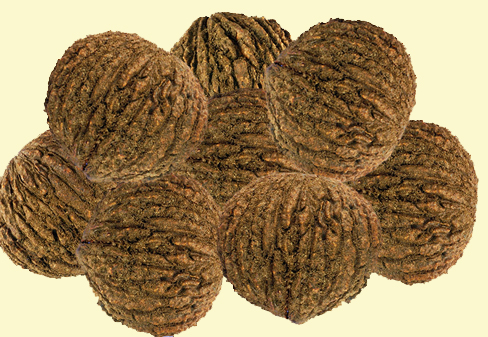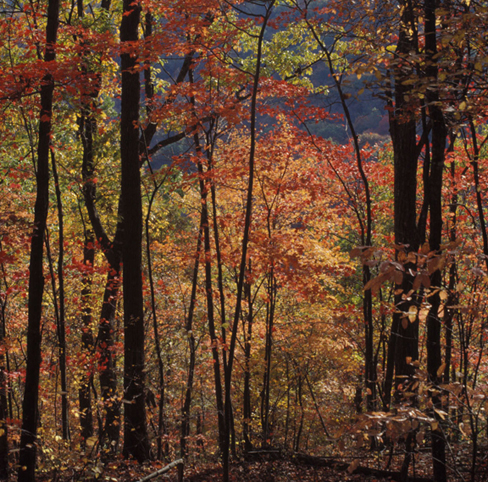Wildcrafting
Kentuckians have been collecting plant products from forests, meadows, and other natural habitats for generations. This practice, commonly referred to as wildcrafting, is a tradition in many areas of the state, especially Appalachia. Plant materials other than timber that are harvested from the forest are generally referred to as non-timber forest products (NTFPs) or special(ty) forest products. Although often collected for personal use, many wildcrafted materials also have commercial value and could offer a means of providing additional income. Wood lot owners may harvest NTFPs to provide temporary income while waiting for their timber stand to mature or as another means to supplement their income. NTFPs can provide a way to diversify and expand an existing woodland enterprise.
Marketing
 NTFPs are specialty items that fill a very narrow market niche. Many are seasonal either in terms of availability or marketability. The NTFP collector needs to make sure there is a demand for their products and that they can meet the buyer’s specifications. As with any niche item, it is critical to secure a market in advance for NTFPs. Direct market outlets, depending on the item collected, can include farmers markets, roadside stands, nurseries, locally owned grocery stores, craft stores, and the Internet. Agritourism events and county fairs can present opportunities for selling wildcrafted goods. Bed-and-breakfast inns and Kentucky tourist gift shops may also be interested in purchasing native plant materials and/or products. NTFPs offer an advantage to farmers who market directly to consumers at farmers markets and other direct market outlets. Products such as nuts, decorative or ornamental plants, and plant by-products can help fill up a market stand into the fall months.
NTFPs are specialty items that fill a very narrow market niche. Many are seasonal either in terms of availability or marketability. The NTFP collector needs to make sure there is a demand for their products and that they can meet the buyer’s specifications. As with any niche item, it is critical to secure a market in advance for NTFPs. Direct market outlets, depending on the item collected, can include farmers markets, roadside stands, nurseries, locally owned grocery stores, craft stores, and the Internet. Agritourism events and county fairs can present opportunities for selling wildcrafted goods. Bed-and-breakfast inns and Kentucky tourist gift shops may also be interested in purchasing native plant materials and/or products. NTFPs offer an advantage to farmers who market directly to consumers at farmers markets and other direct market outlets. Products such as nuts, decorative or ornamental plants, and plant by-products can help fill up a market stand into the fall months.
Examples of Non-timber Forest Products
 Culinary: Edible products for culinary uses include fruits, berries, and nuts from forest trees and shrubs. Leaves of some herbaceous plants may be used for greens or dried herbs. A number of wild mushroom species can also be collected for culinary use. Some of these, such as morels, are considered a delicacy and are highly prized. Mushroom collectors must be particularly careful in their identification since there are often poisonous look-alikes that can be mistaken for the edible species. Medicinals: Plants or plant parts with therapeutic value may be marketed for use as medicinals, food supplements, or herbal remedies. These products are often dried and sold to wholesale buyers or dealers. Decoratives: This category includes plant materials used for handicrafts, as well as those utilized in the floral industry. The types of plant materials that can be used for these purposes are extensive and varied. Branches that are unique, bearing berries, or encrusted with lichen provide interesting accents to floral arrangements. Some dormant woody stems can be sold either before or after they have been forced to flower. Flowering stems, evergreen boughs, cones, and seed pods have numerous decorative uses. Shelf fungi, mosses, ferns, and nuts may be of interest to the floral trade or local craftsmen. Wood carvers are often interested in obtaining thick bark pieces from trees such as sassafras and walnut. Bark should be collected only from dead or dying trees, or those marked for timber harvest. Vines and willow branches may be suitable for basketry and other craft projects. Potpourri products made from the right combination of dried aromatic leaves, flowers, herbs, seeds, and needles are another popular way to use natural products.
Culinary: Edible products for culinary uses include fruits, berries, and nuts from forest trees and shrubs. Leaves of some herbaceous plants may be used for greens or dried herbs. A number of wild mushroom species can also be collected for culinary use. Some of these, such as morels, are considered a delicacy and are highly prized. Mushroom collectors must be particularly careful in their identification since there are often poisonous look-alikes that can be mistaken for the edible species. Medicinals: Plants or plant parts with therapeutic value may be marketed for use as medicinals, food supplements, or herbal remedies. These products are often dried and sold to wholesale buyers or dealers. Decoratives: This category includes plant materials used for handicrafts, as well as those utilized in the floral industry. The types of plant materials that can be used for these purposes are extensive and varied. Branches that are unique, bearing berries, or encrusted with lichen provide interesting accents to floral arrangements. Some dormant woody stems can be sold either before or after they have been forced to flower. Flowering stems, evergreen boughs, cones, and seed pods have numerous decorative uses. Shelf fungi, mosses, ferns, and nuts may be of interest to the floral trade or local craftsmen. Wood carvers are often interested in obtaining thick bark pieces from trees such as sassafras and walnut. Bark should be collected only from dead or dying trees, or those marked for timber harvest. Vines and willow branches may be suitable for basketry and other craft projects. Potpourri products made from the right combination of dried aromatic leaves, flowers, herbs, seeds, and needles are another popular way to use natural products.
See the full crop profile and other resources below:

